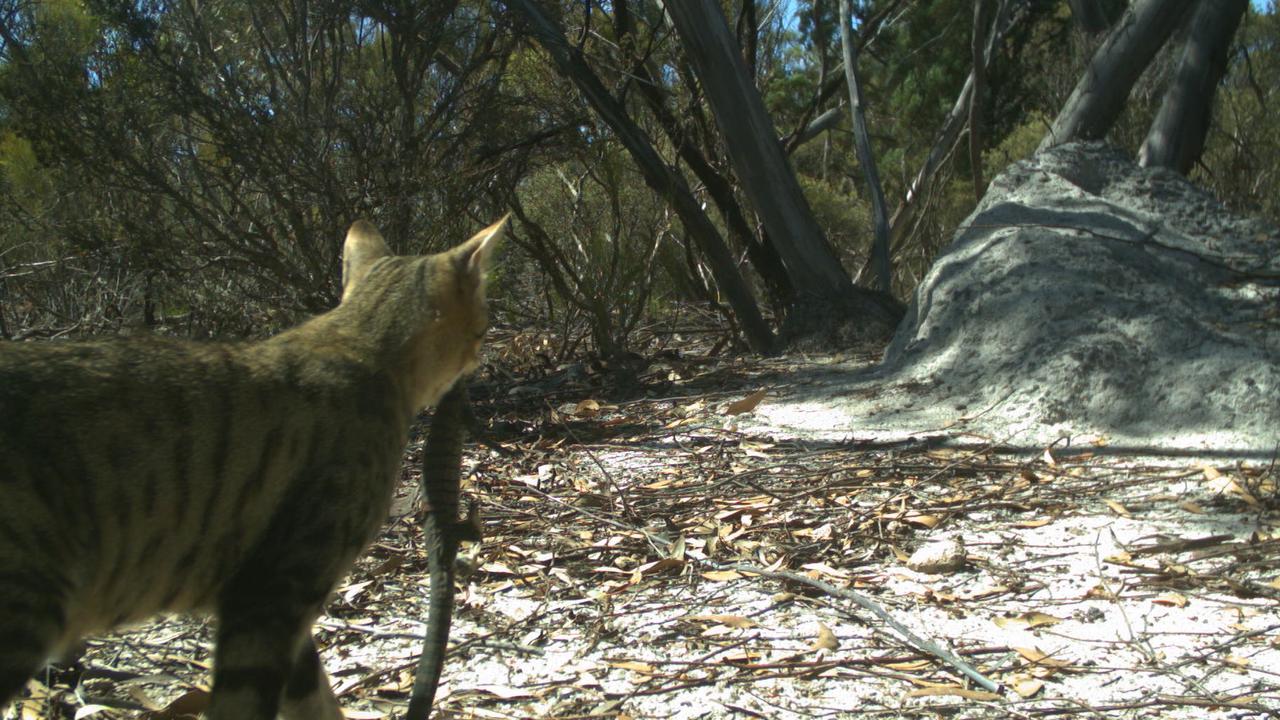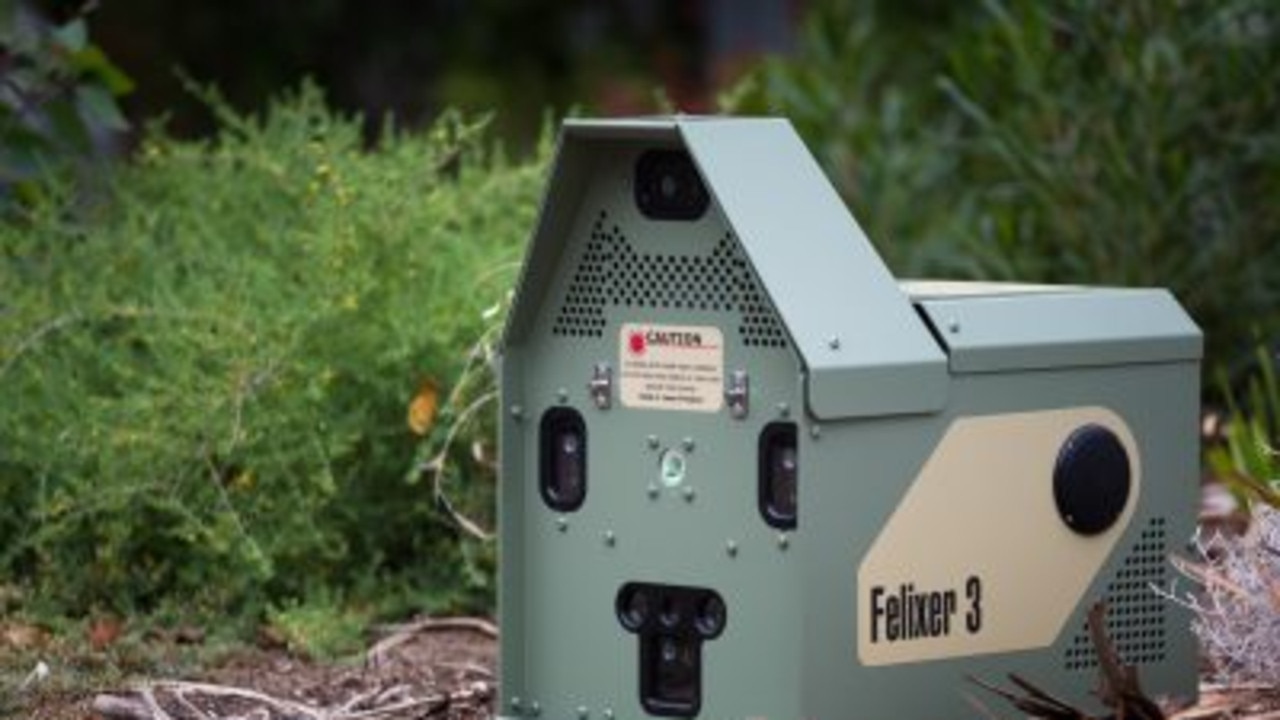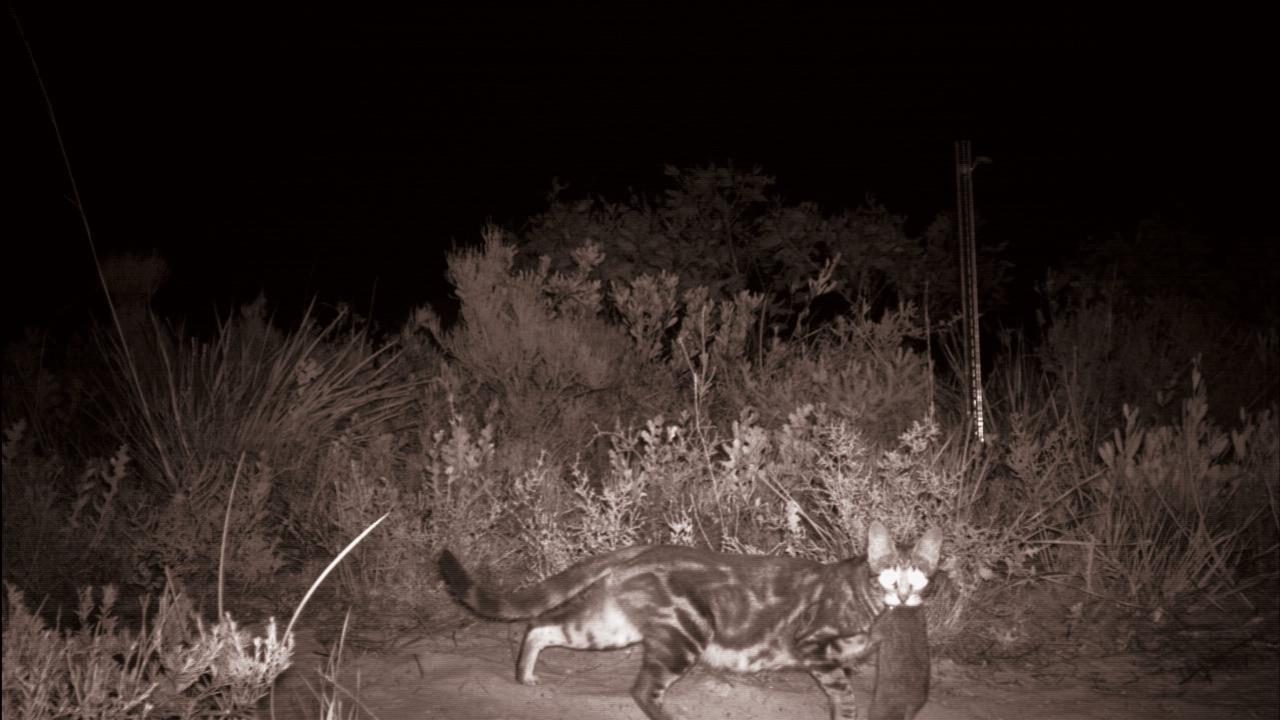WA’s plan to crackdown on number of feral cats through new technology and baiting
One state will spend millions on baiting and trapping countless feral cats within its borders in order to protect wildlife.

Western Australia’s government will spend millions of dollars on a feral cat crackdown to stop the “devastating impact” on native wildlife.
The strategy will include using a fatal new technology that will kill feral cats by spraying them with poison.
The Felixer device, which uses lasers and cameras to identify feral cats and foxes from other animals before spraying them with 8 milligrams of toxic gel, will be rolled out across the state according to WA Environment Minister Reece Whitby.
“The cat, as a groomer, will then ingest that poison and then die. This is revolutionary, it‘s been tested across Australia,” Mr Whitby said.


Thylation, the company behind the devices, describes them as a “novel, humane and automated tool”.
The company says that most Australian native carnivores are too small to activate Felixers and dingoes are too large.
However, the device can be activated by dingo pups, which means that they will not be suitable in all areas at all times of the year.
Sixteen Felixers will be rolled out in “pinch points” in the environment where a larger number of feral cats are located.
They will be available for local government agencies and for mining companies who apply for them.
Feral cats wreak a devastating toll on native wildlife across Australia, with a single feline roaming in the bush able to kill more than 700 small animals each year.
Each day, feral cats are estimated to kill three million mammals, 1.7 million reptiles, one million birds, 2.8 million invertebrates and 337,000 frogs.
“We‘re not talking about grandma’s kitty, we’re talking about large predators that are finely tuned to be killing machines,” Mr Whitby said.

The state will spend $7.6 million over five years on its crackdown, which will also include increasing the number of baits from 600,000 to 880,000 annually.
Aerial baiting will also be a part of that strategy, with thousands of baits to be laid across conservation areas to “deliver effective landscape scale control of feral cats.
From the funding, $2 million will go toward grants for local community organisations, farmer groups and traditional owners to fight feral cats.
The new strategy was welcomed by the WA Feral Cat Working Group.
“Land clearing and invasive species, including feral cats remain the highest threats to our biodiversity and wildlife,” the group’s chair Susan Hunt said.
“While there are some fabulous examples of feral cat control, a landscape-scale solution is yet to be realised. The strategy and this new funding will help.”



